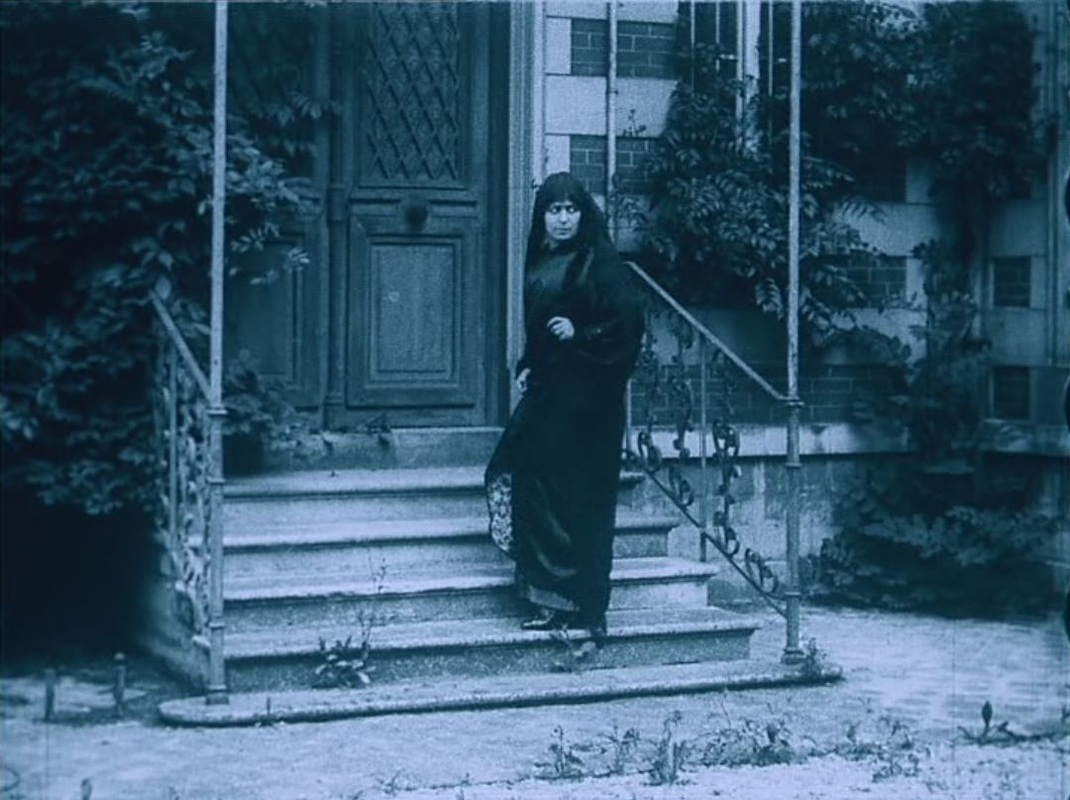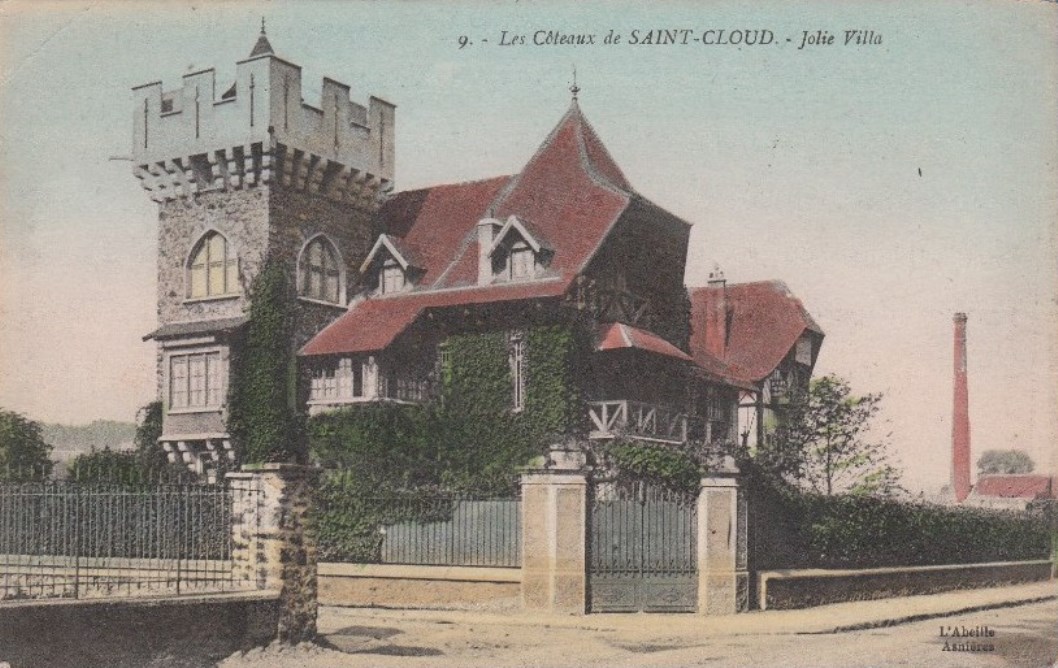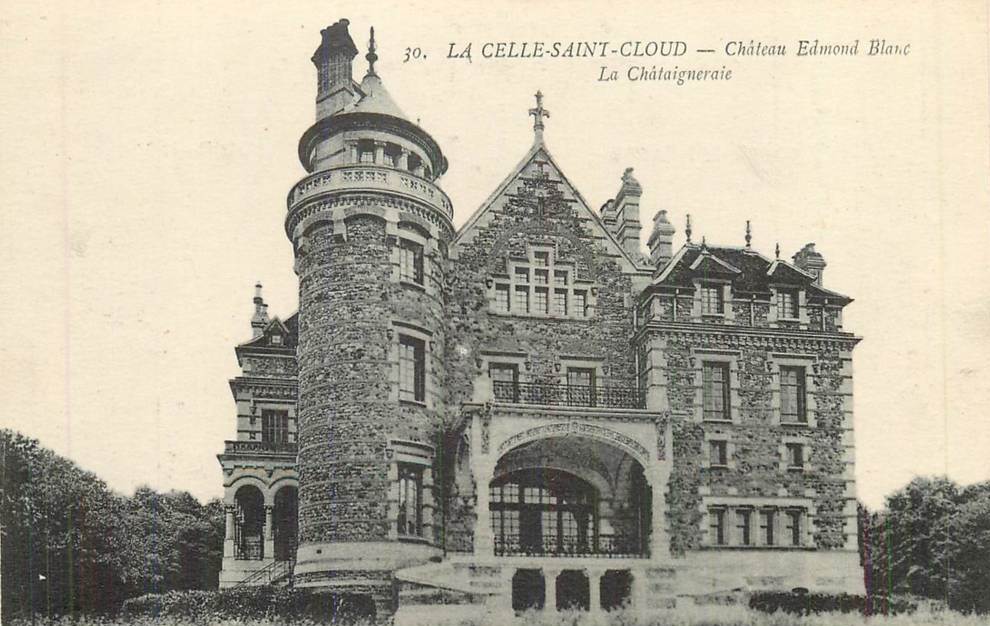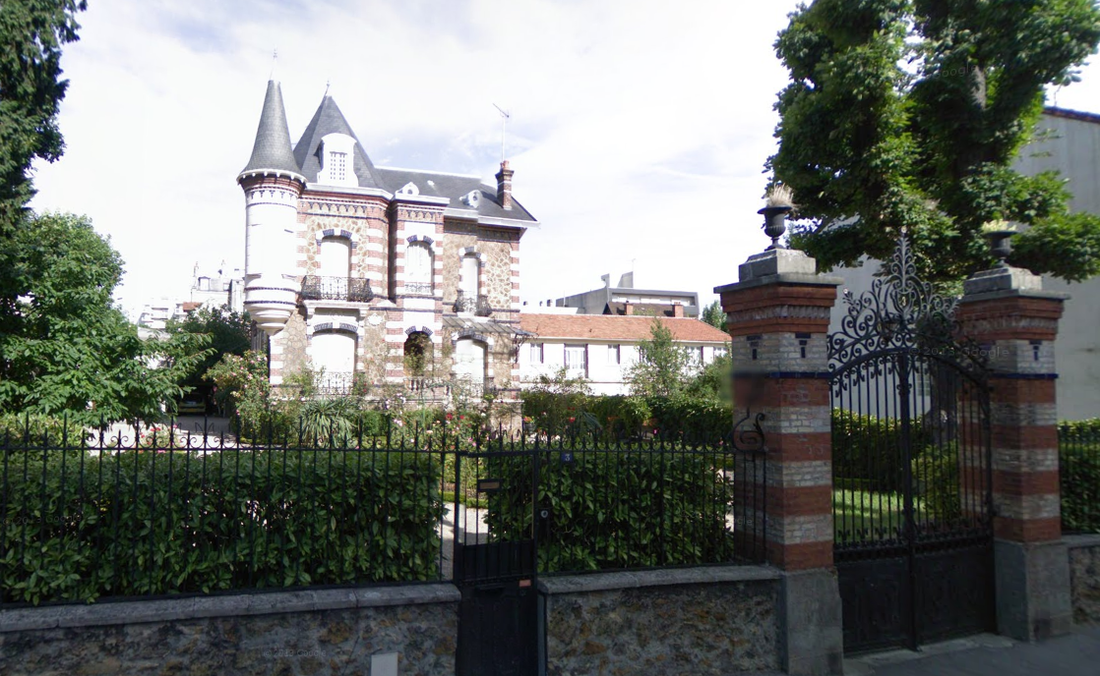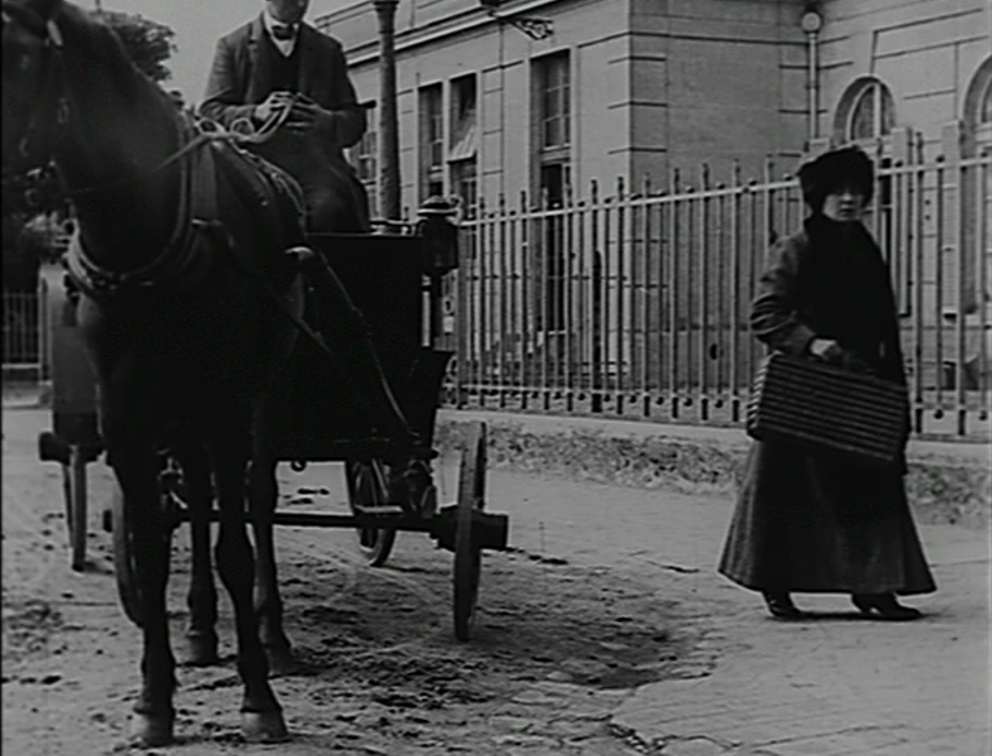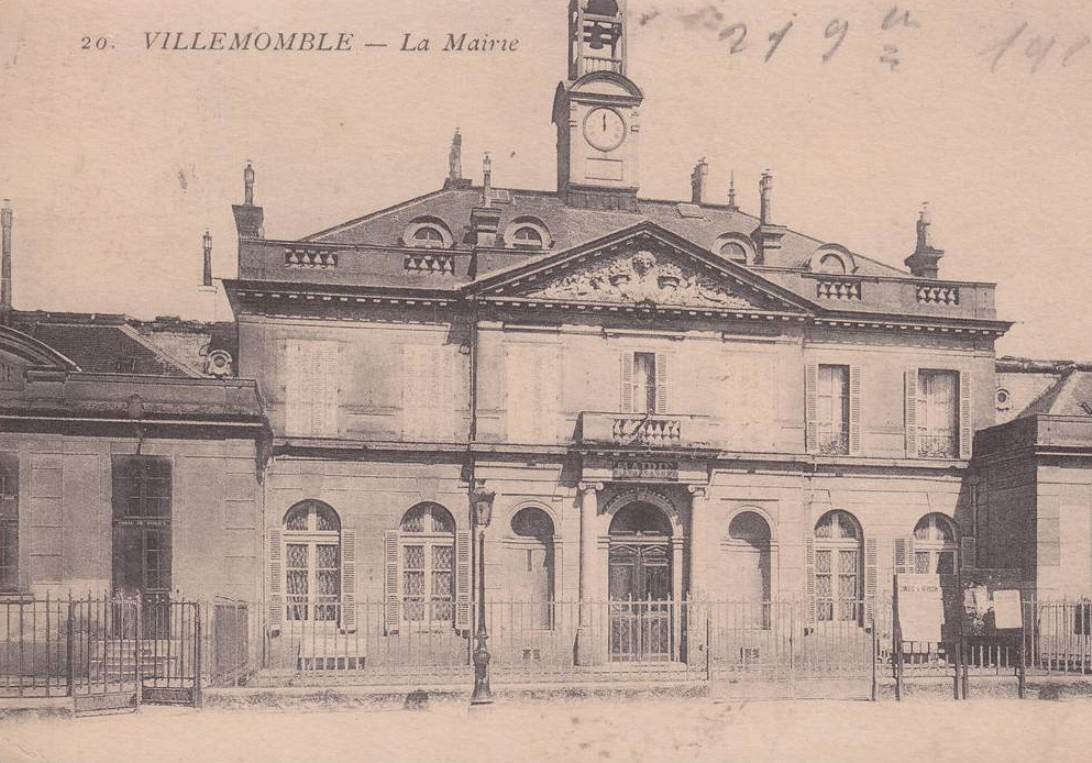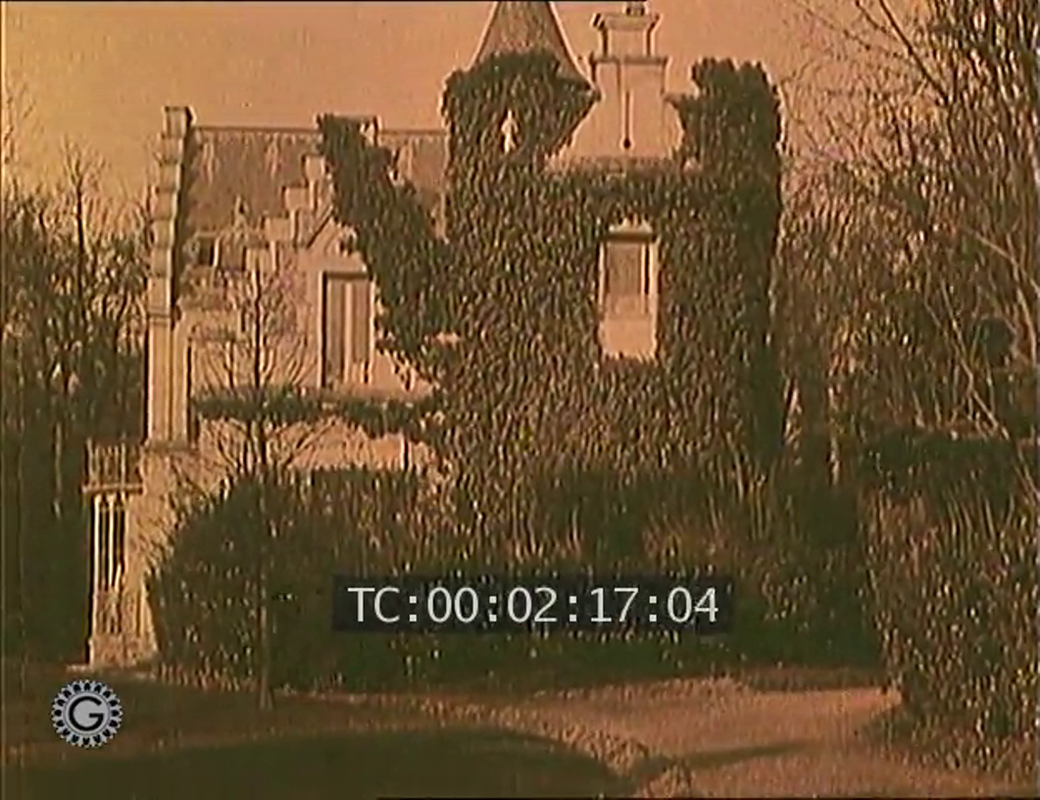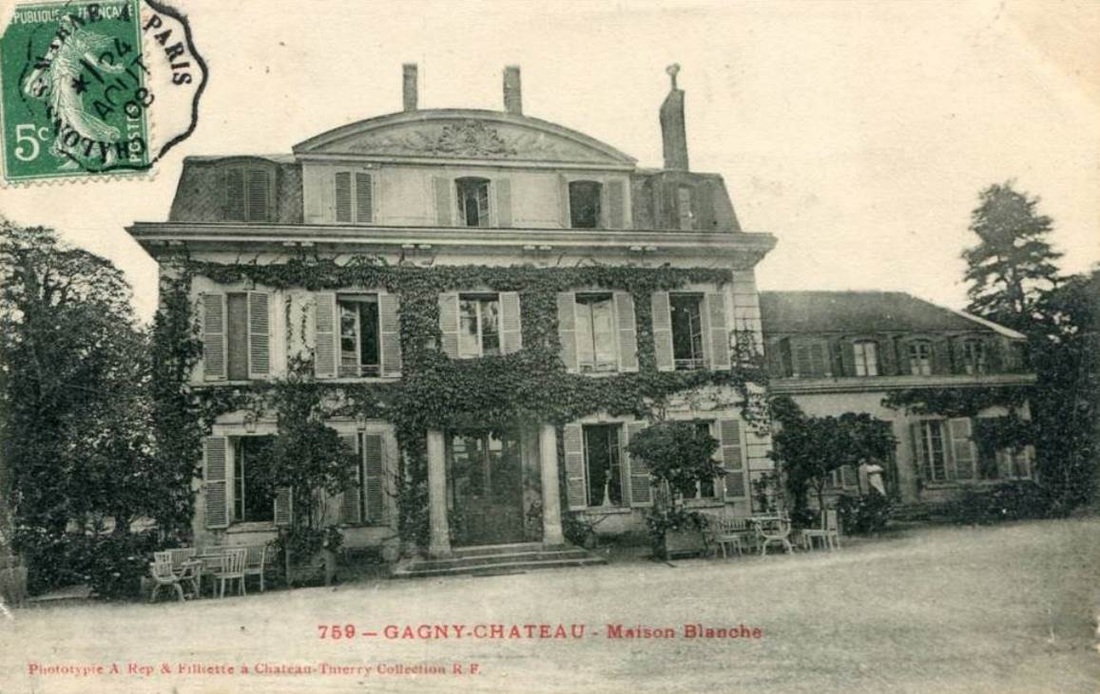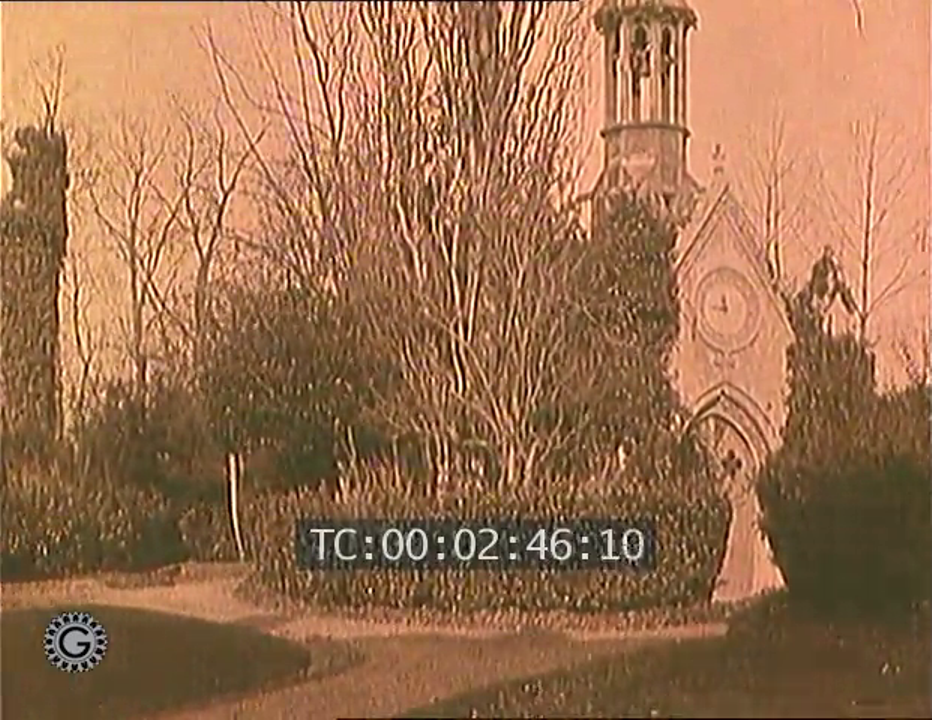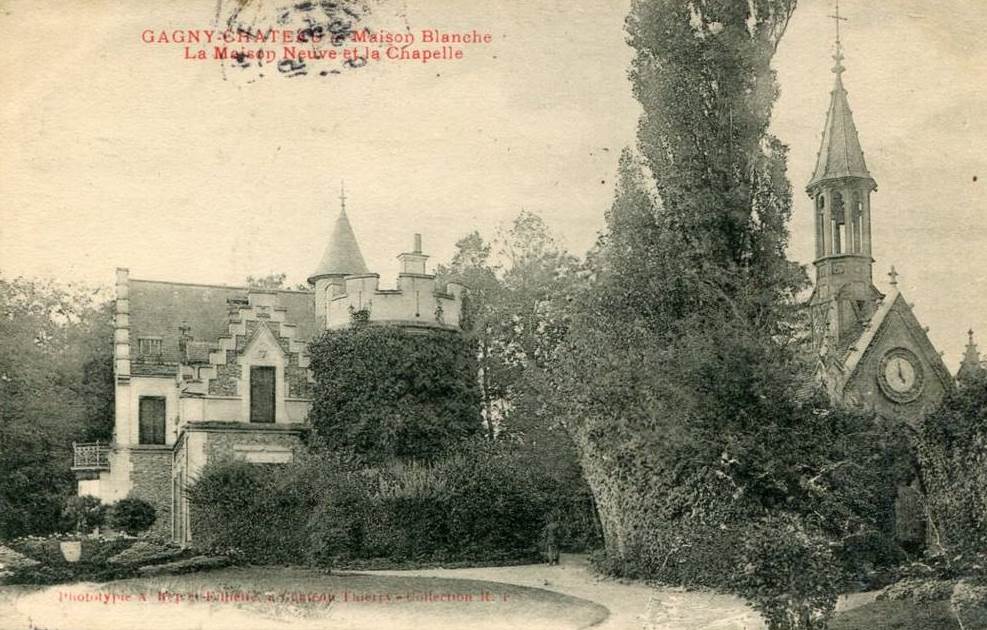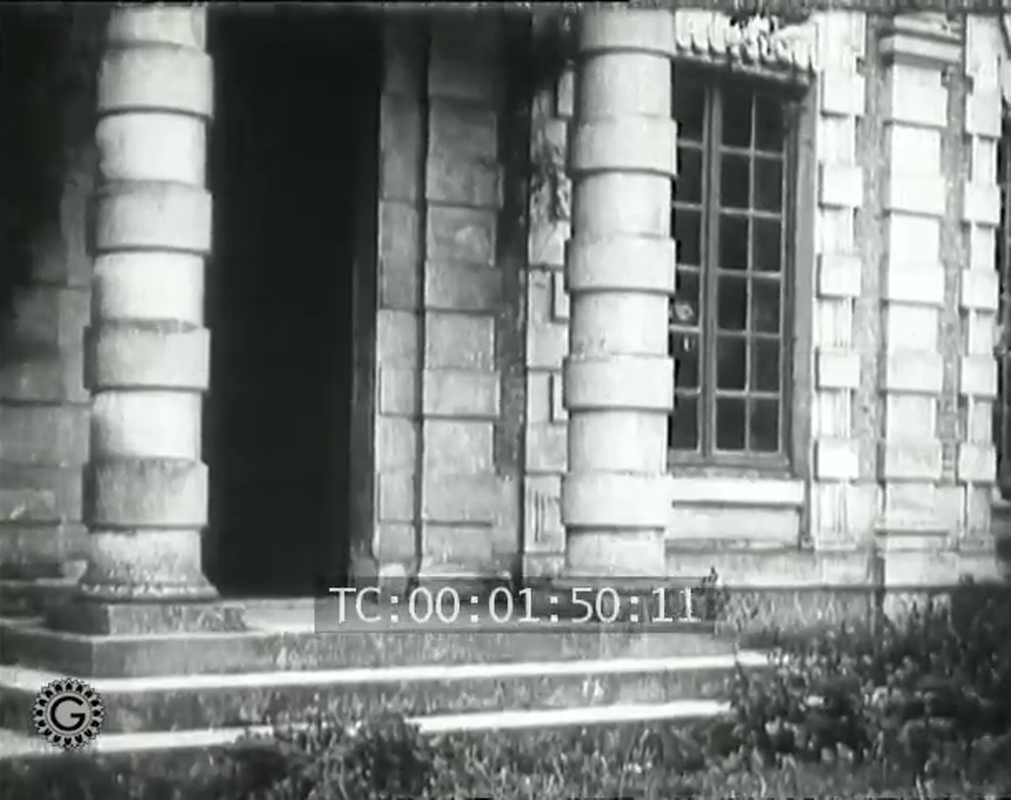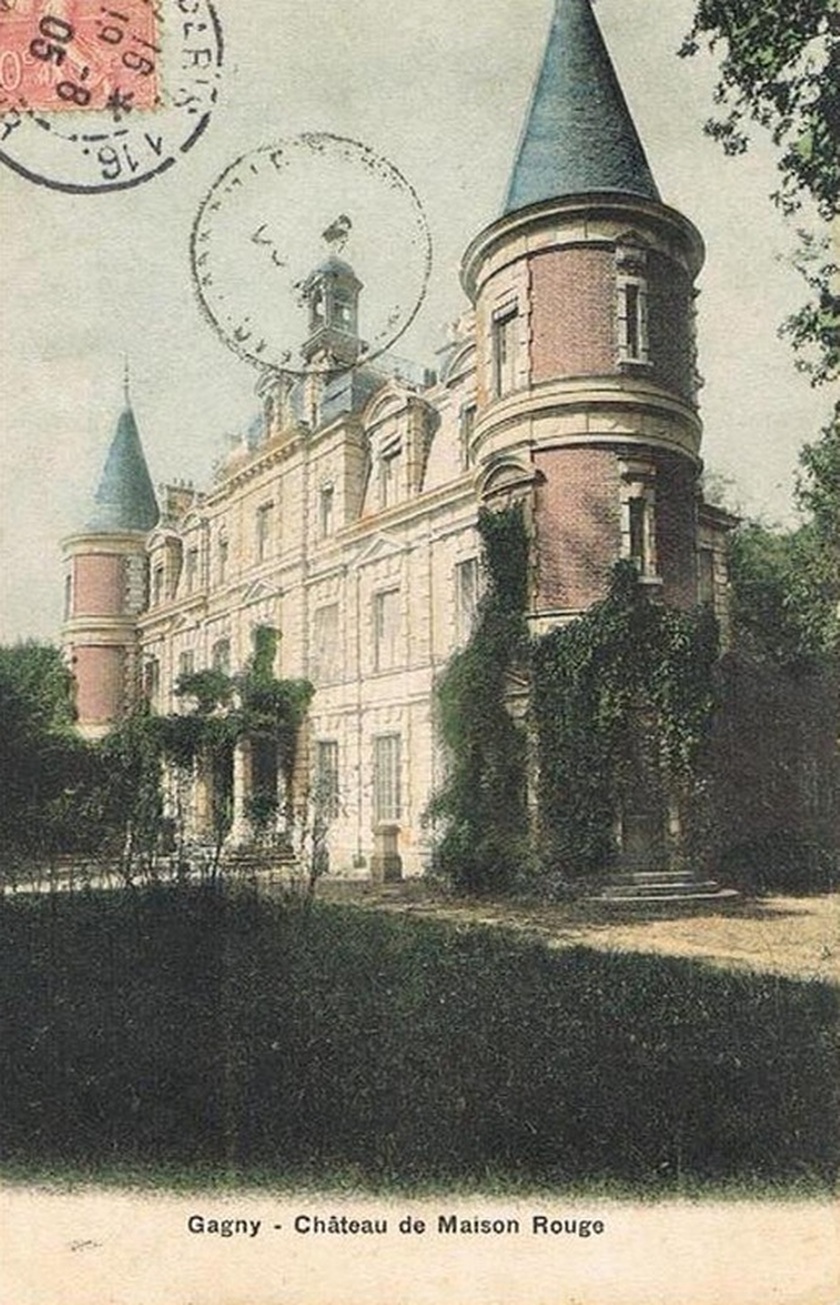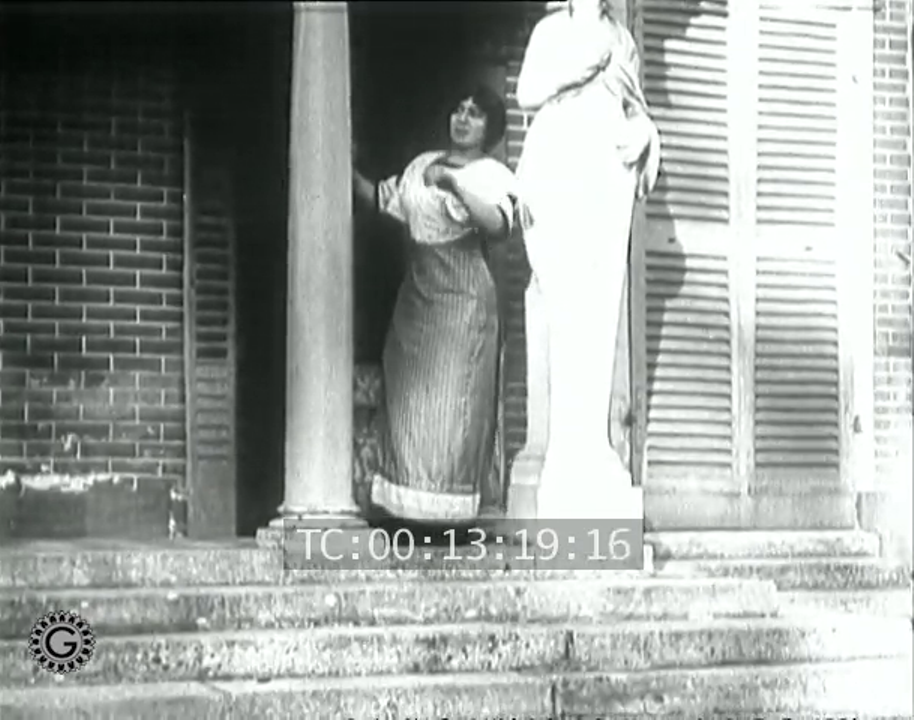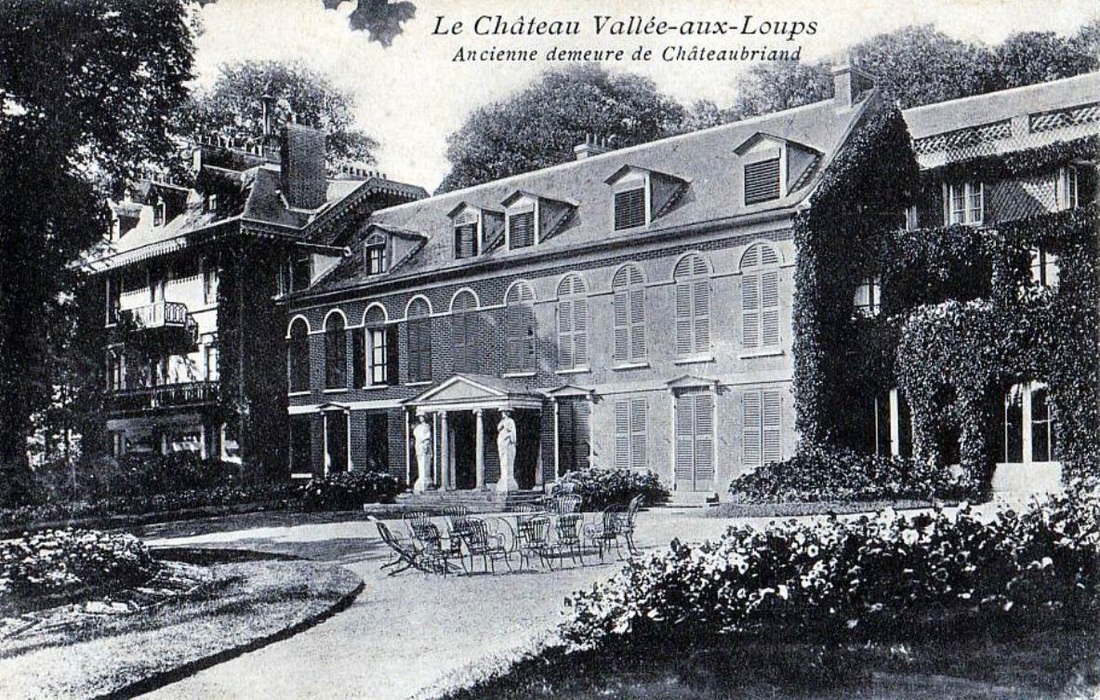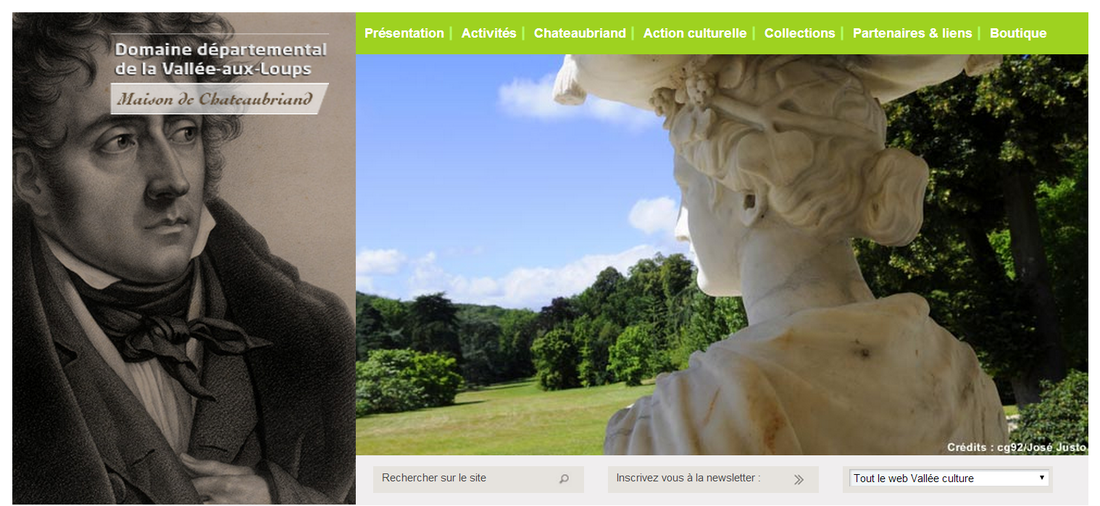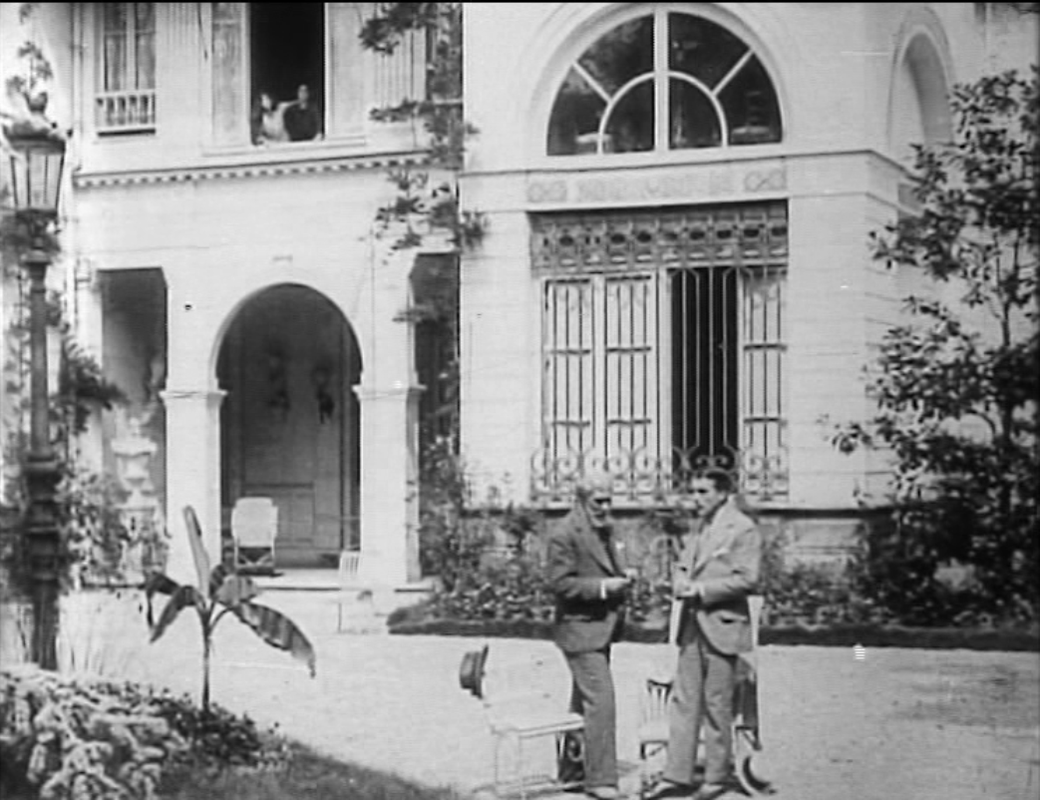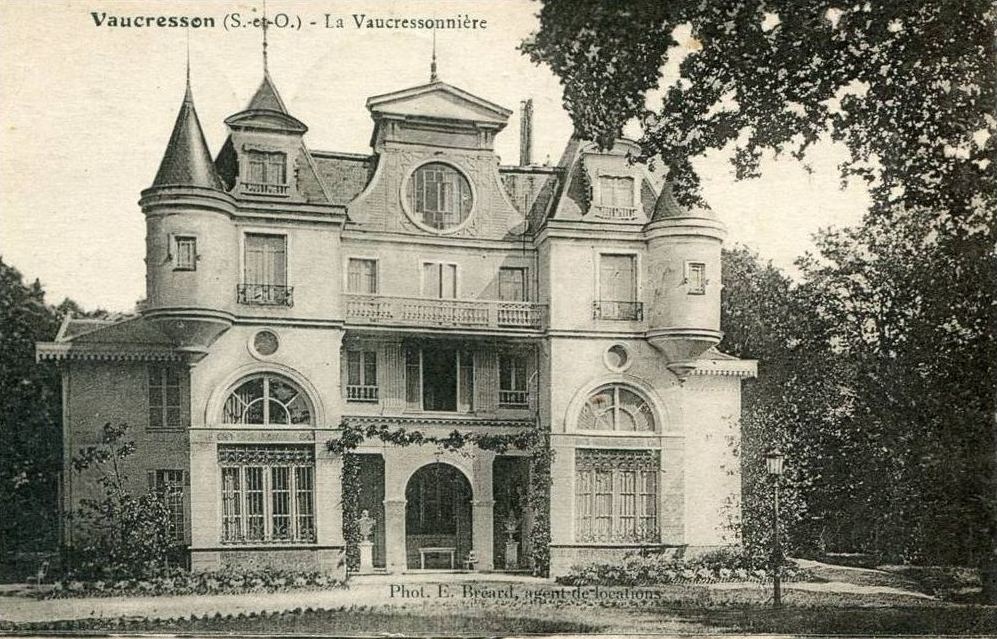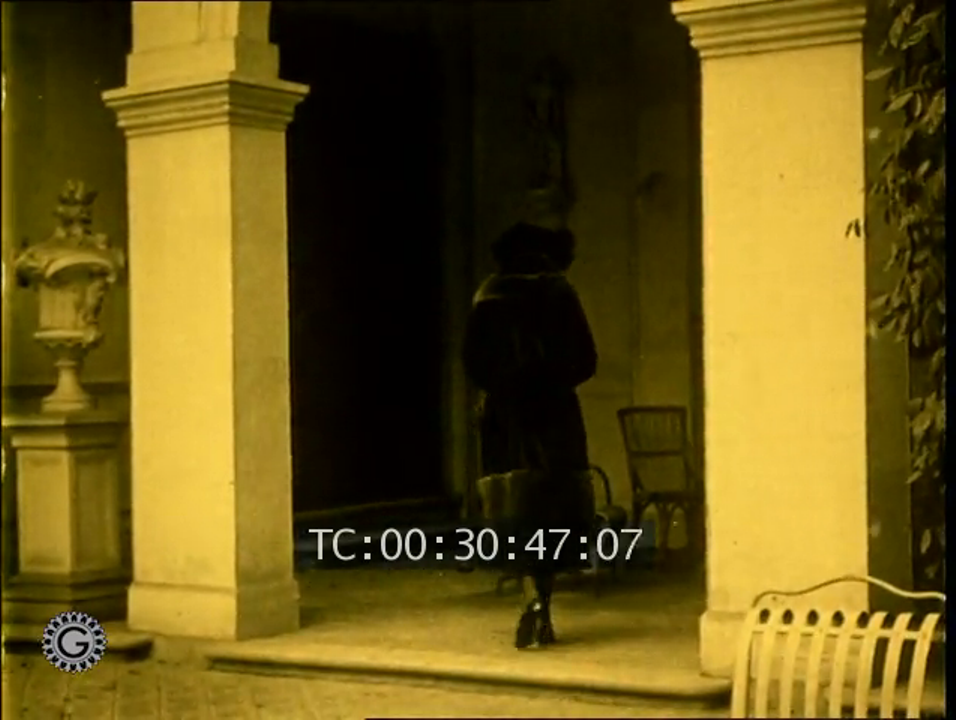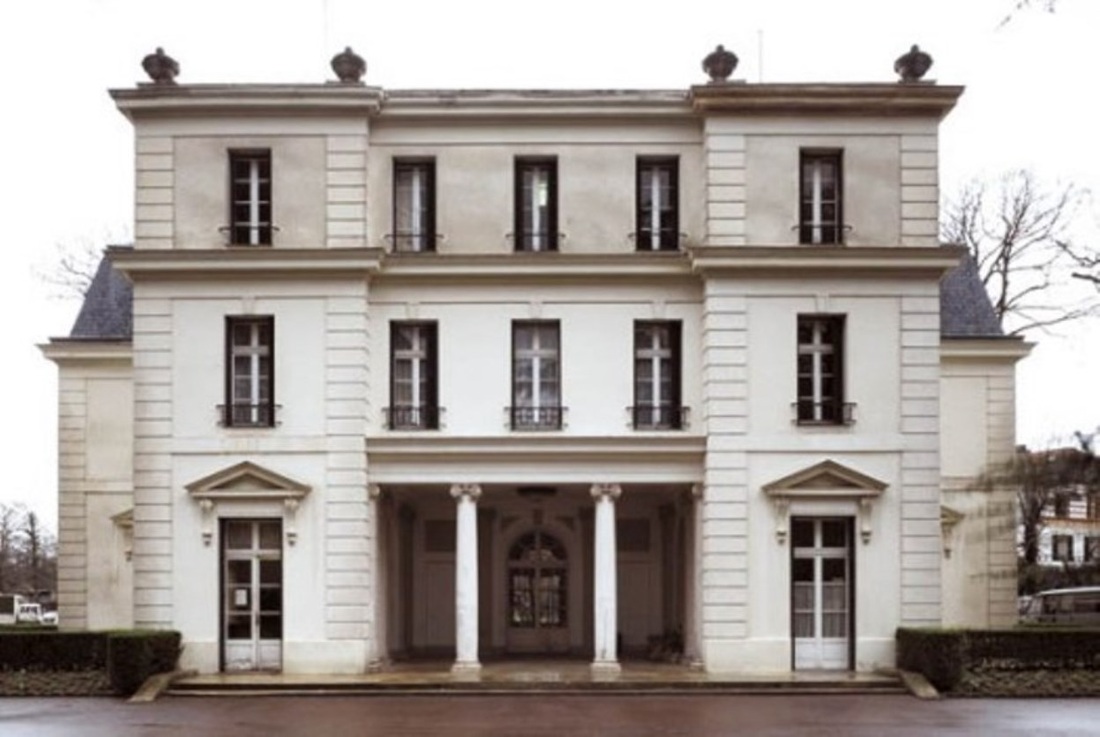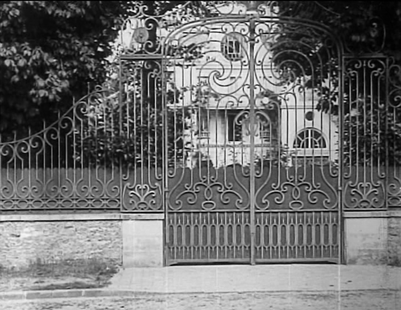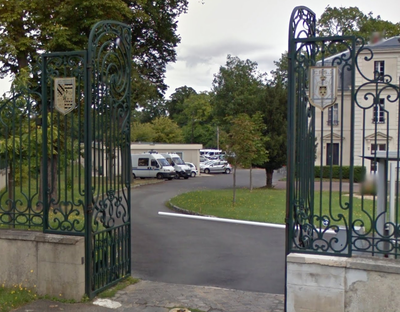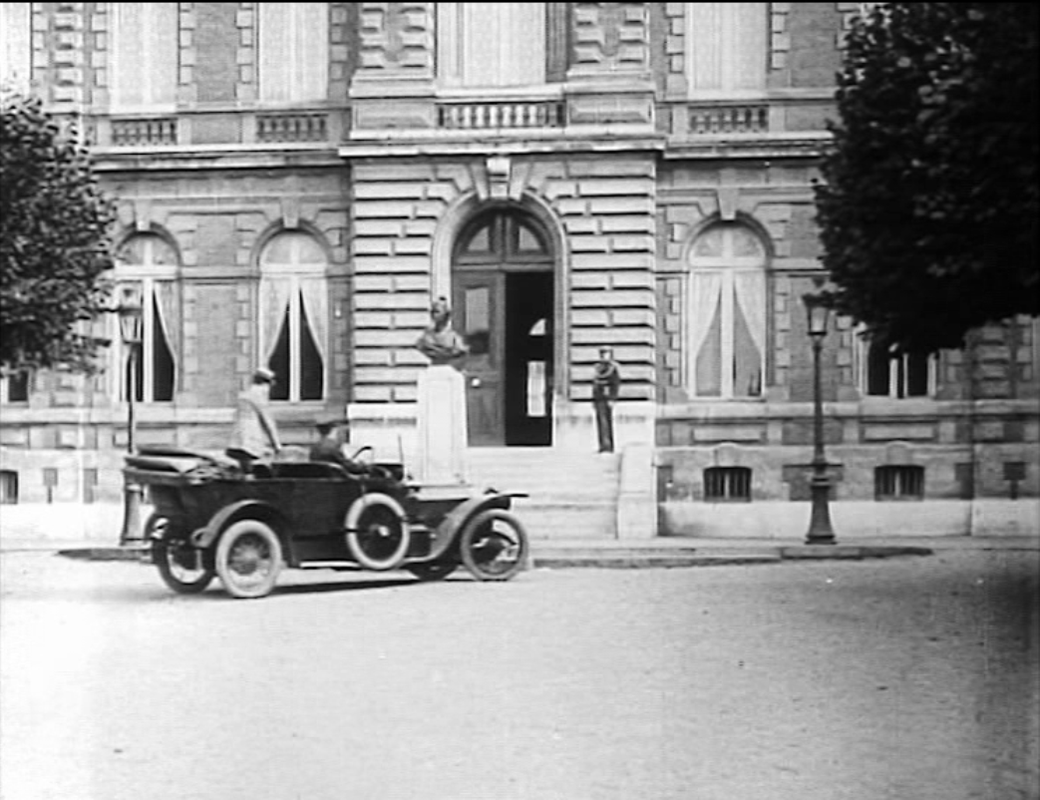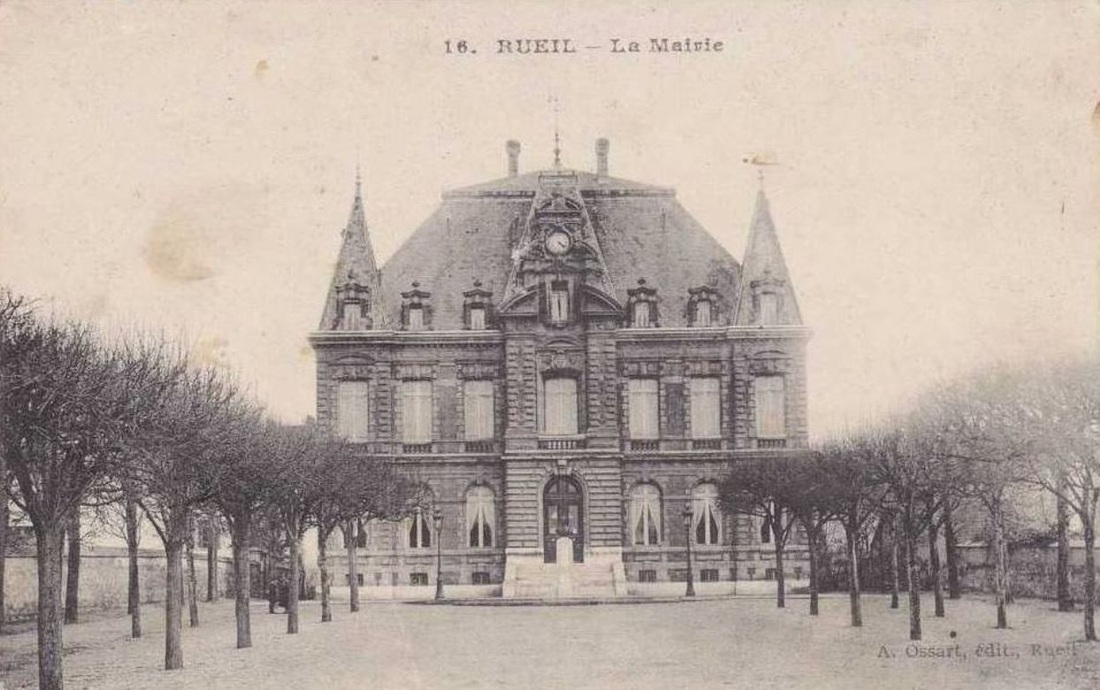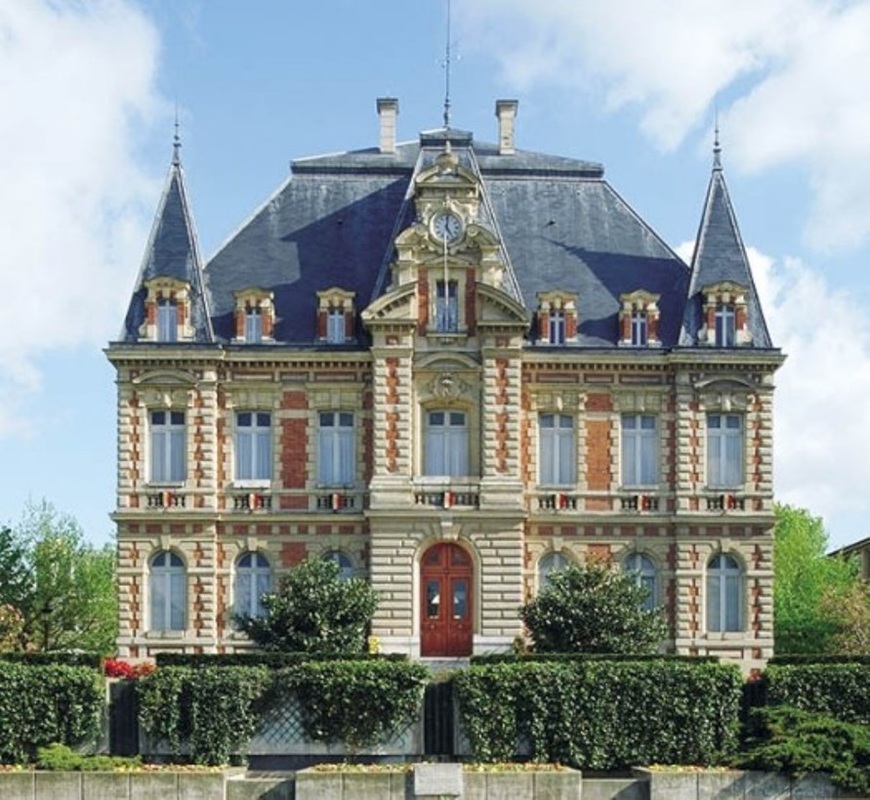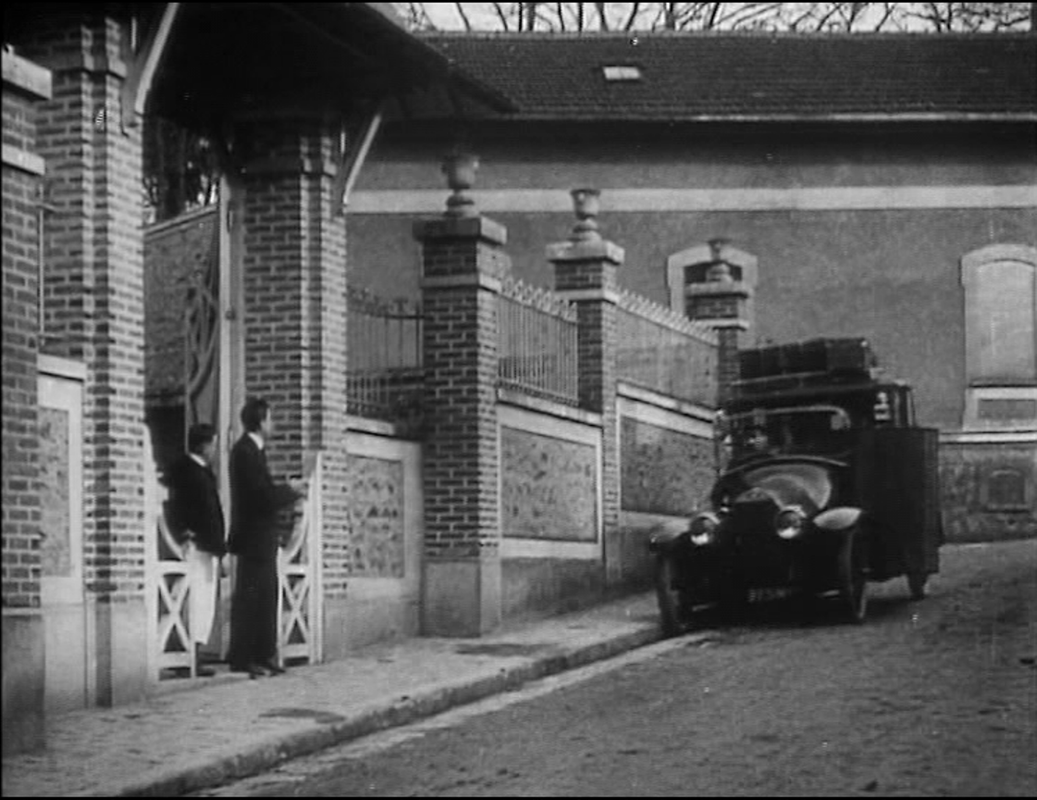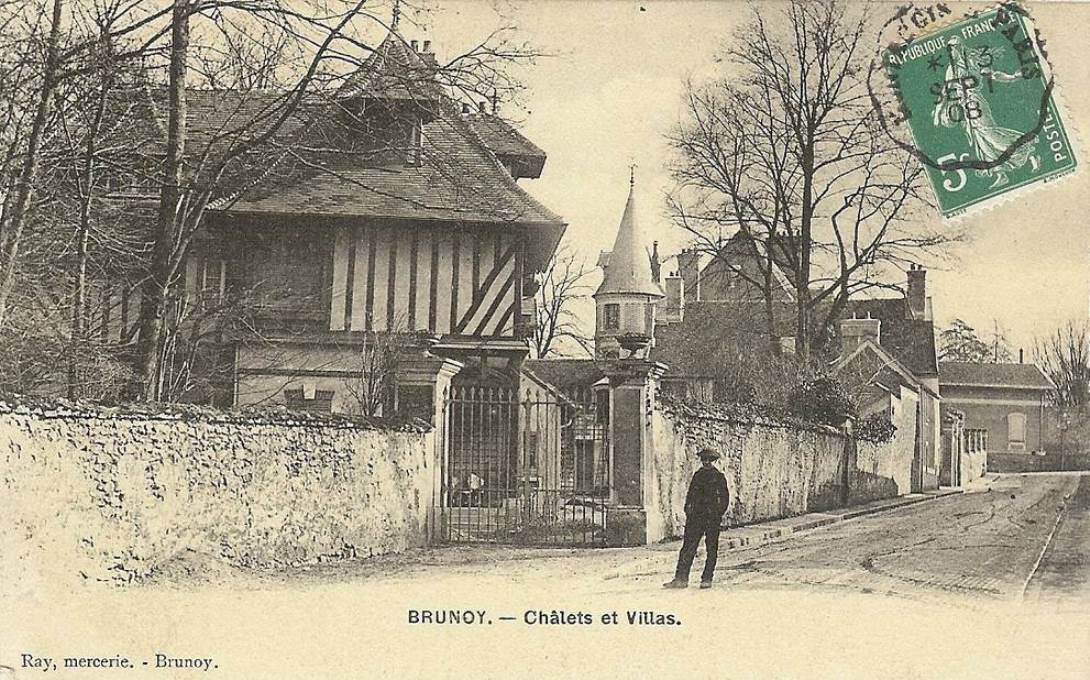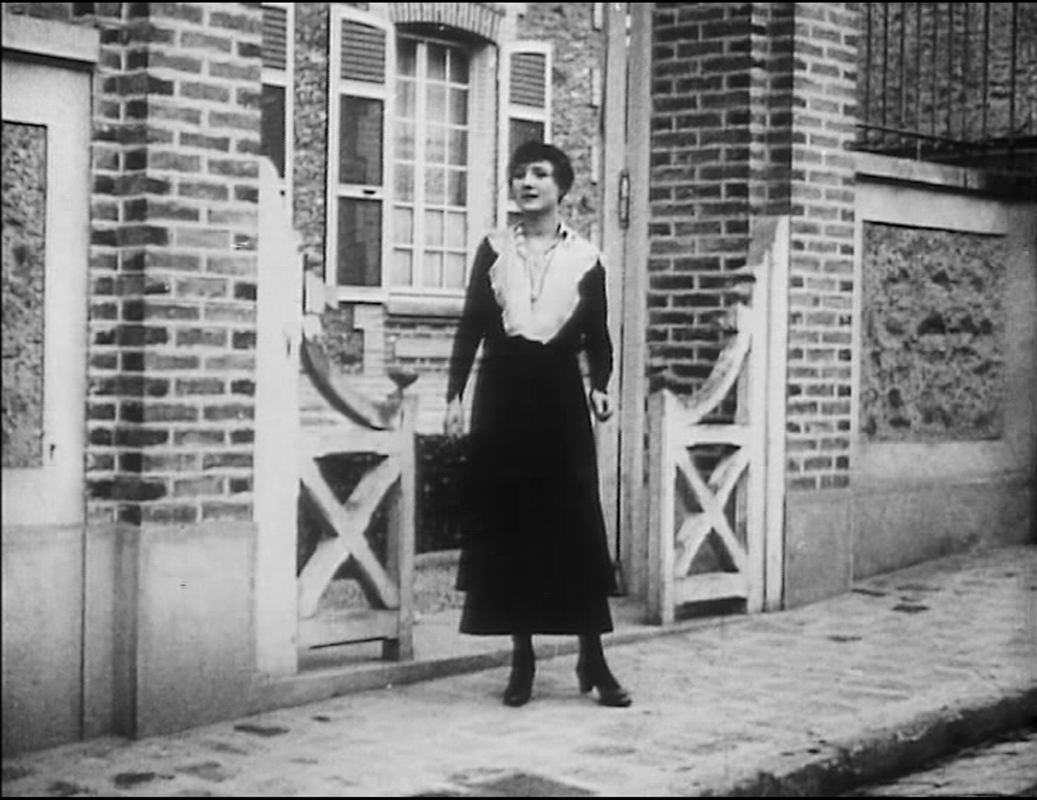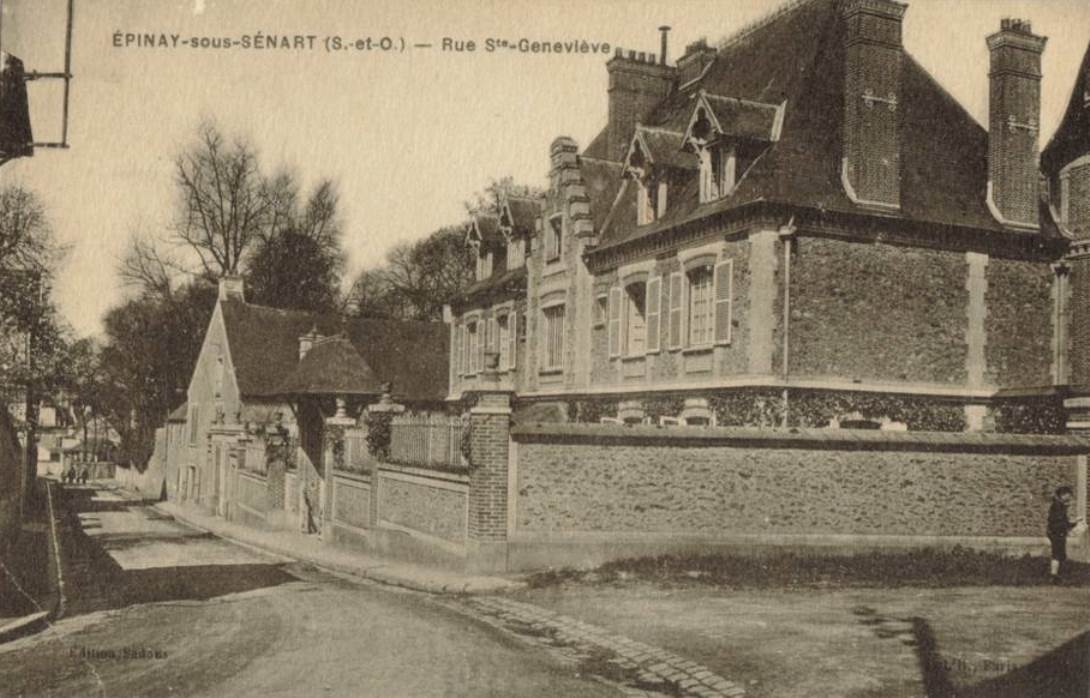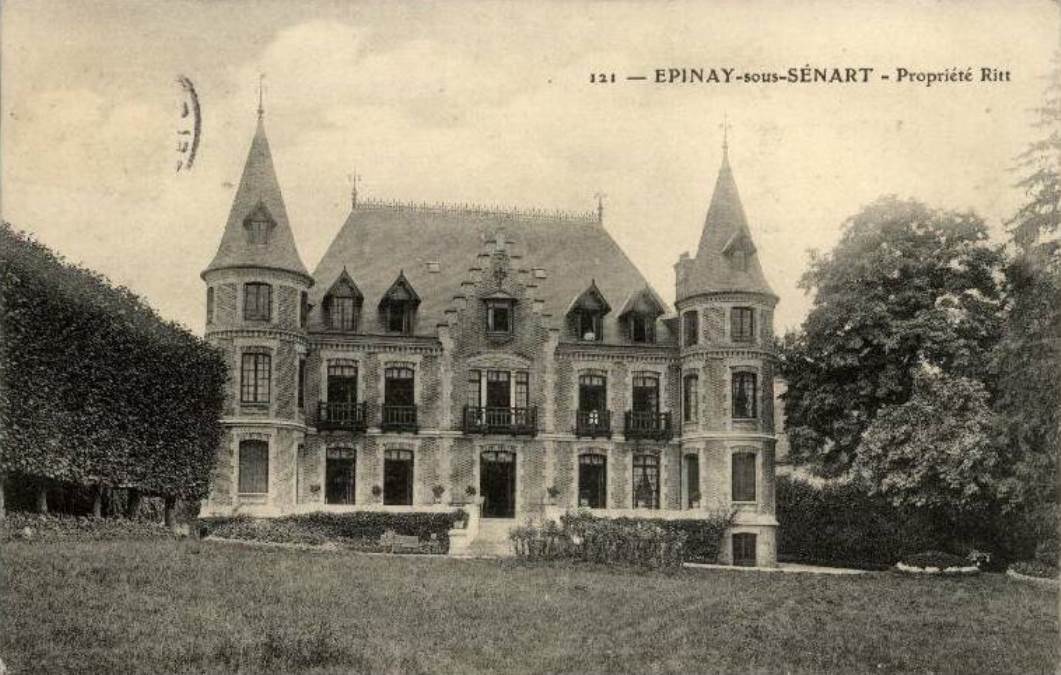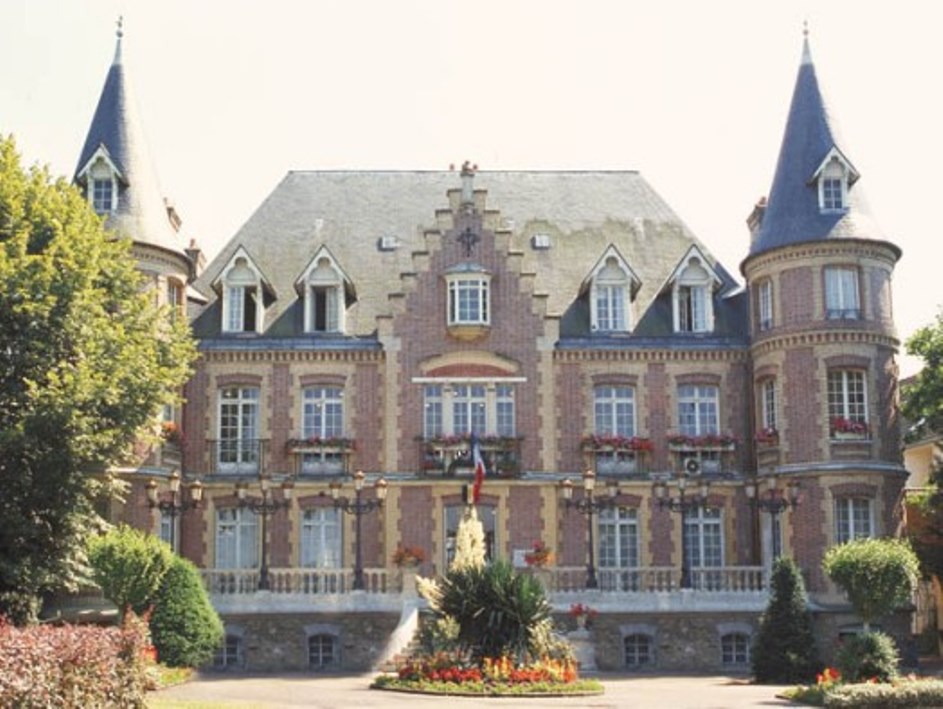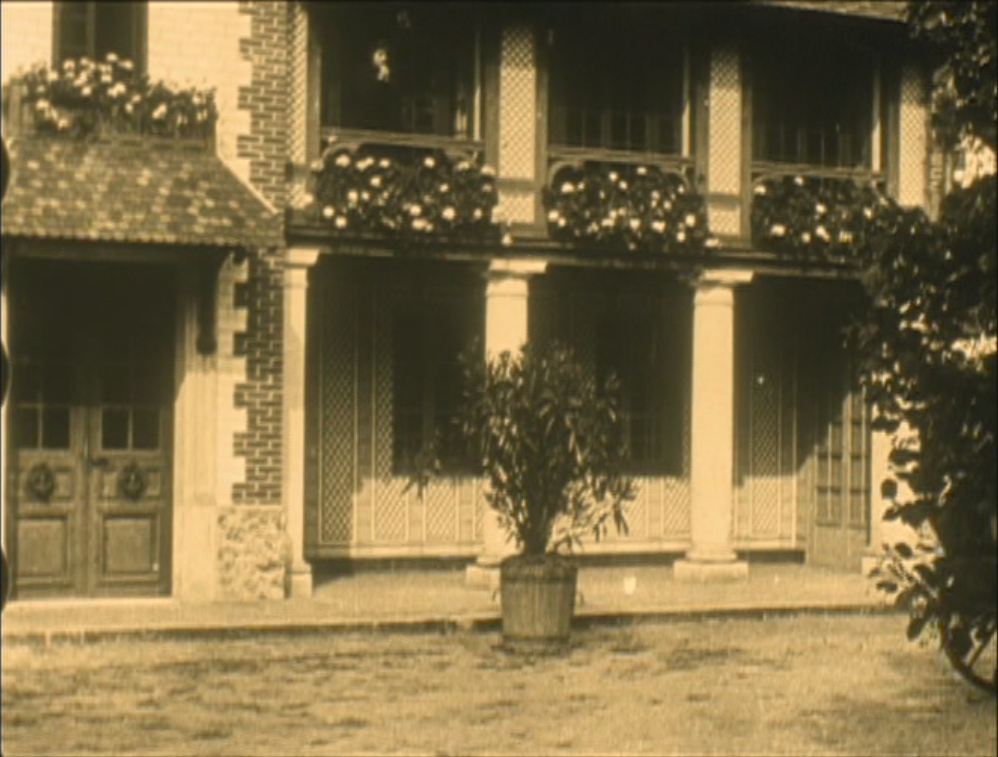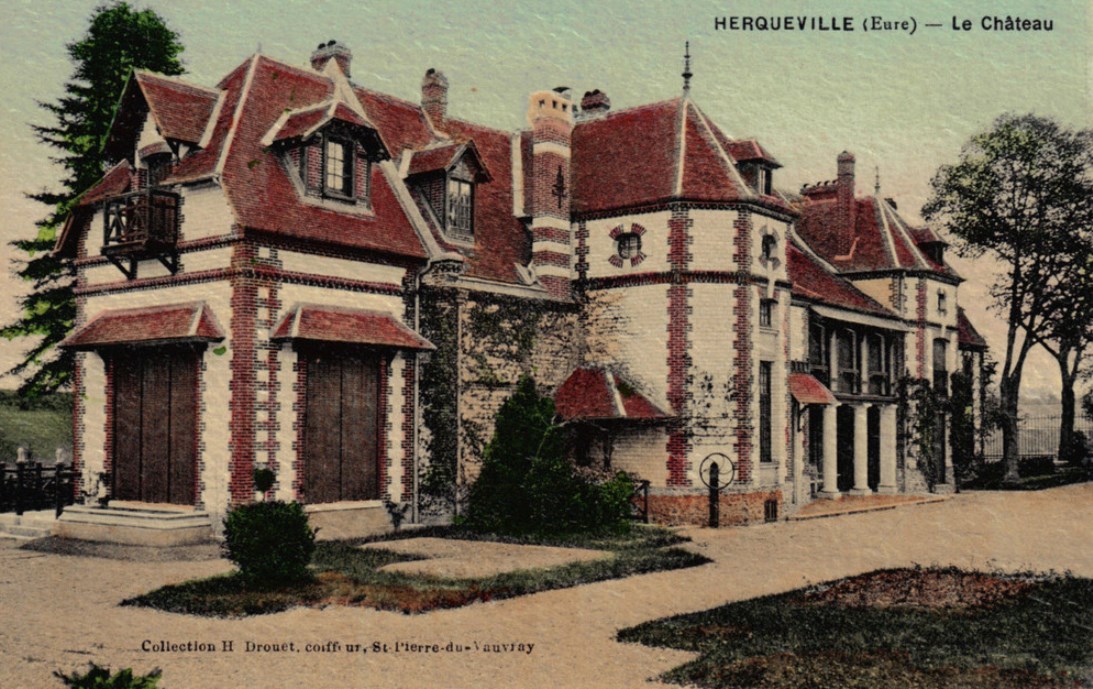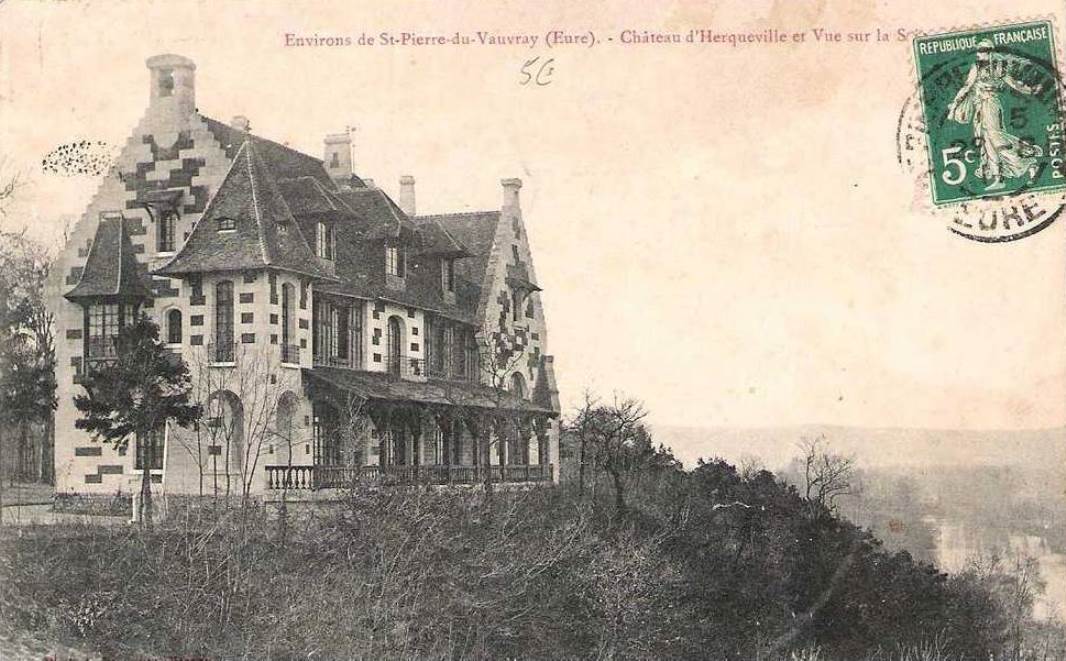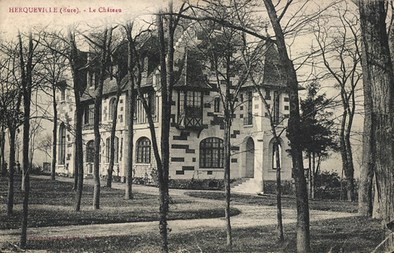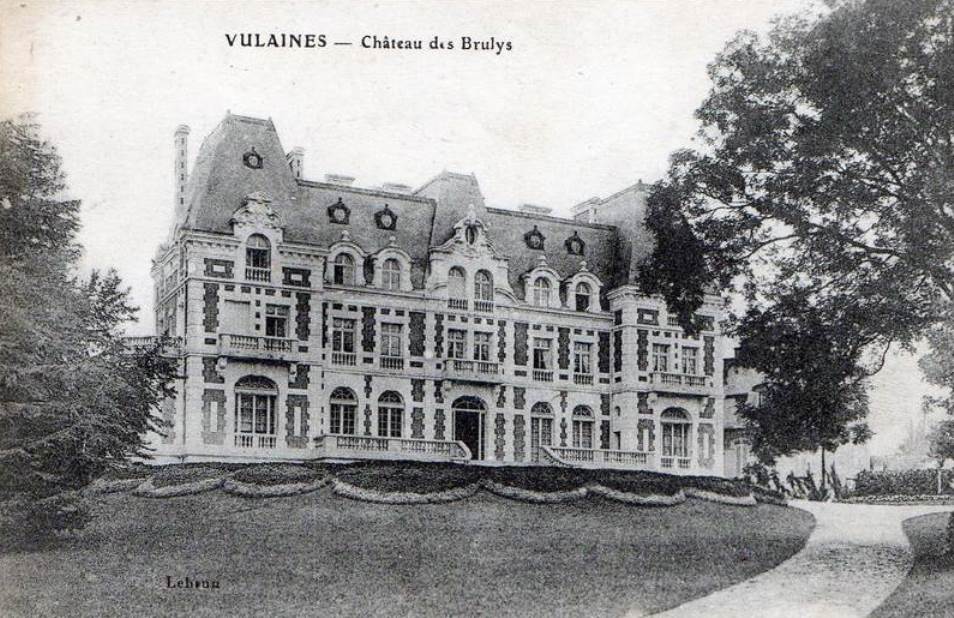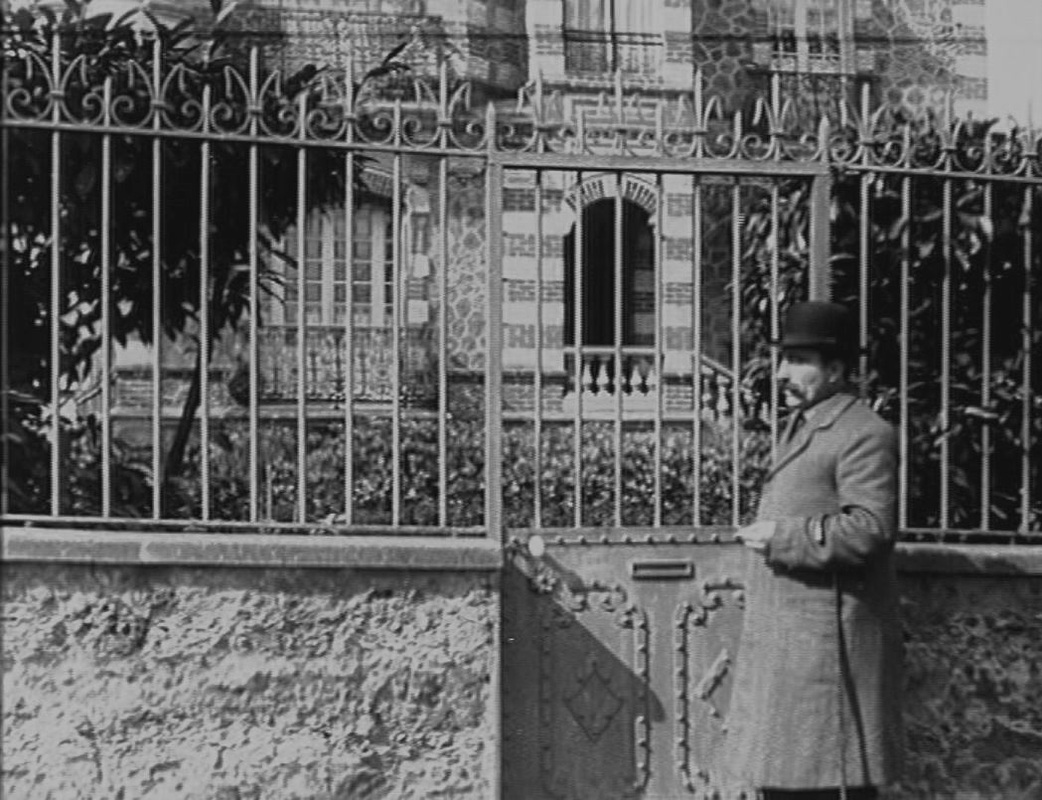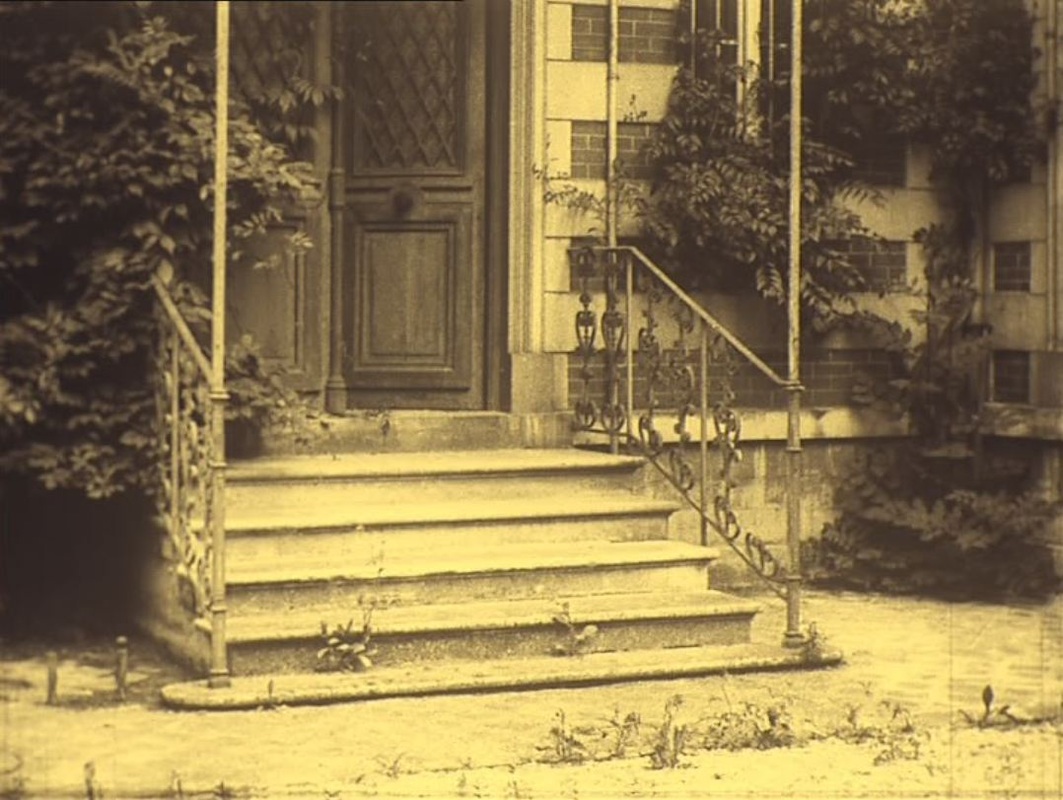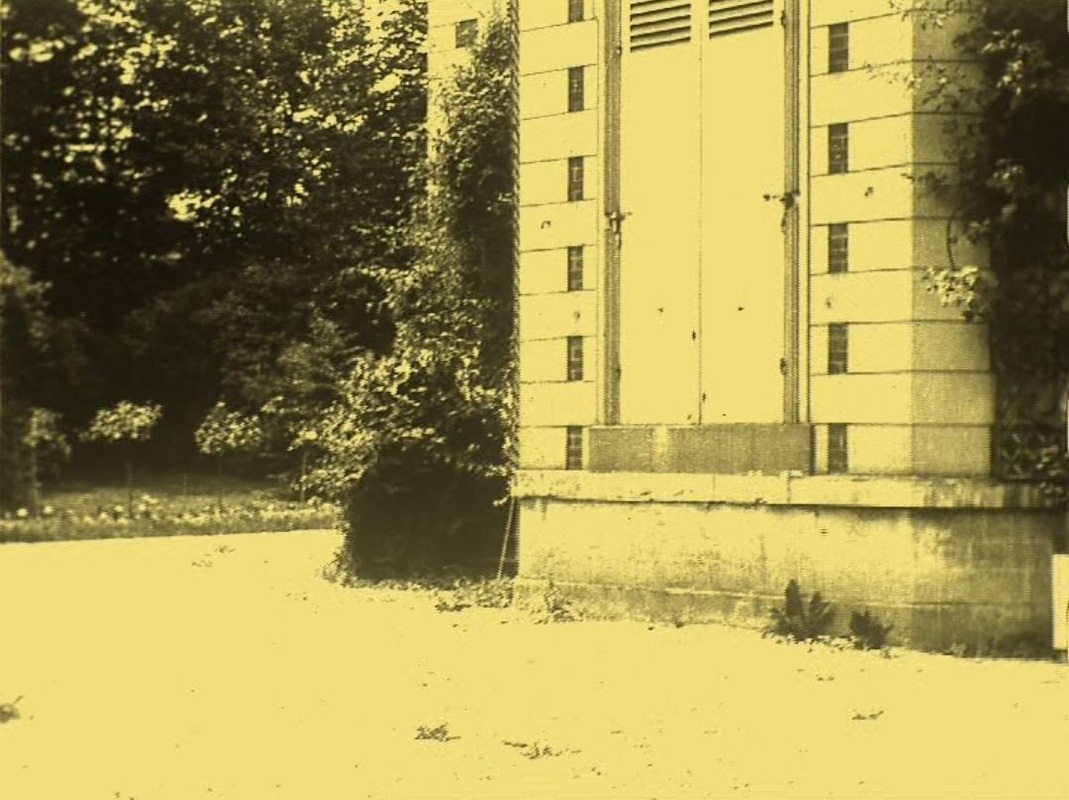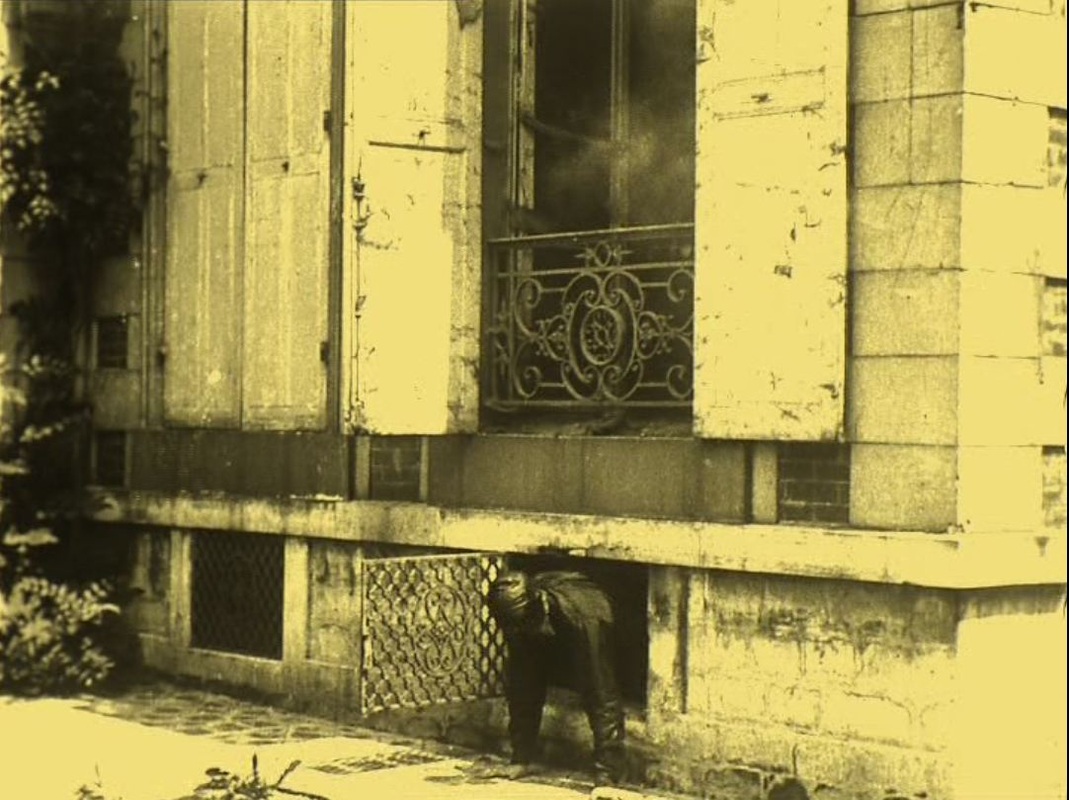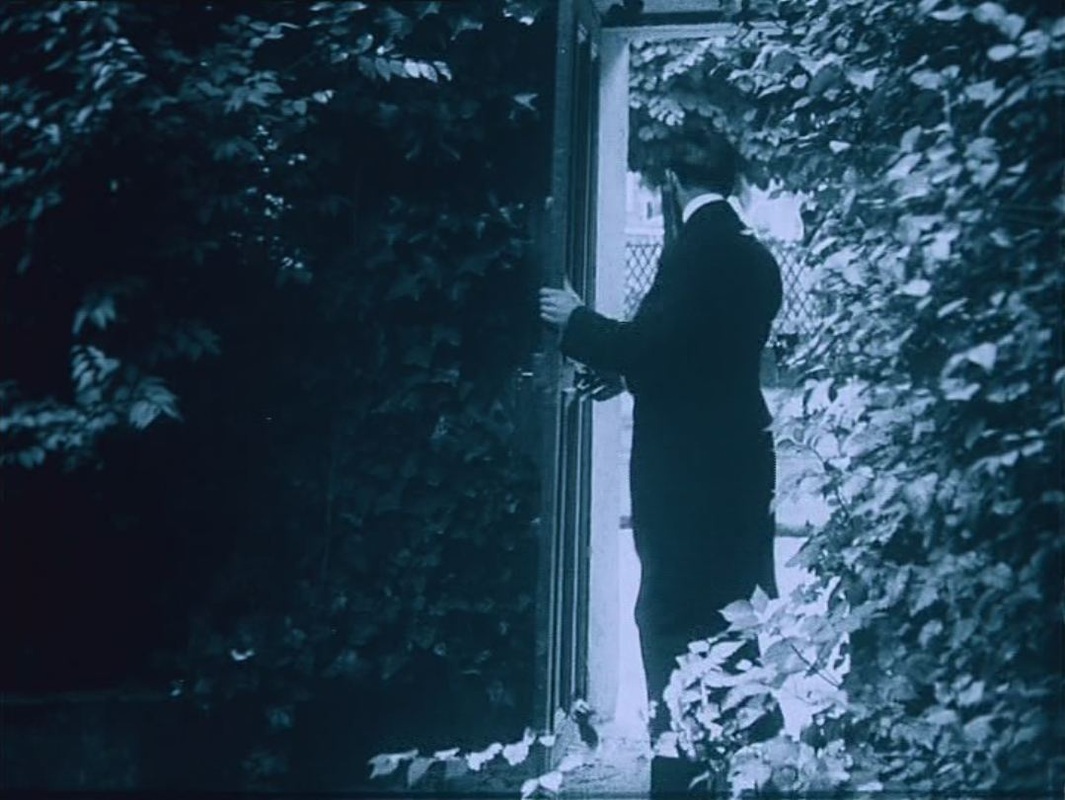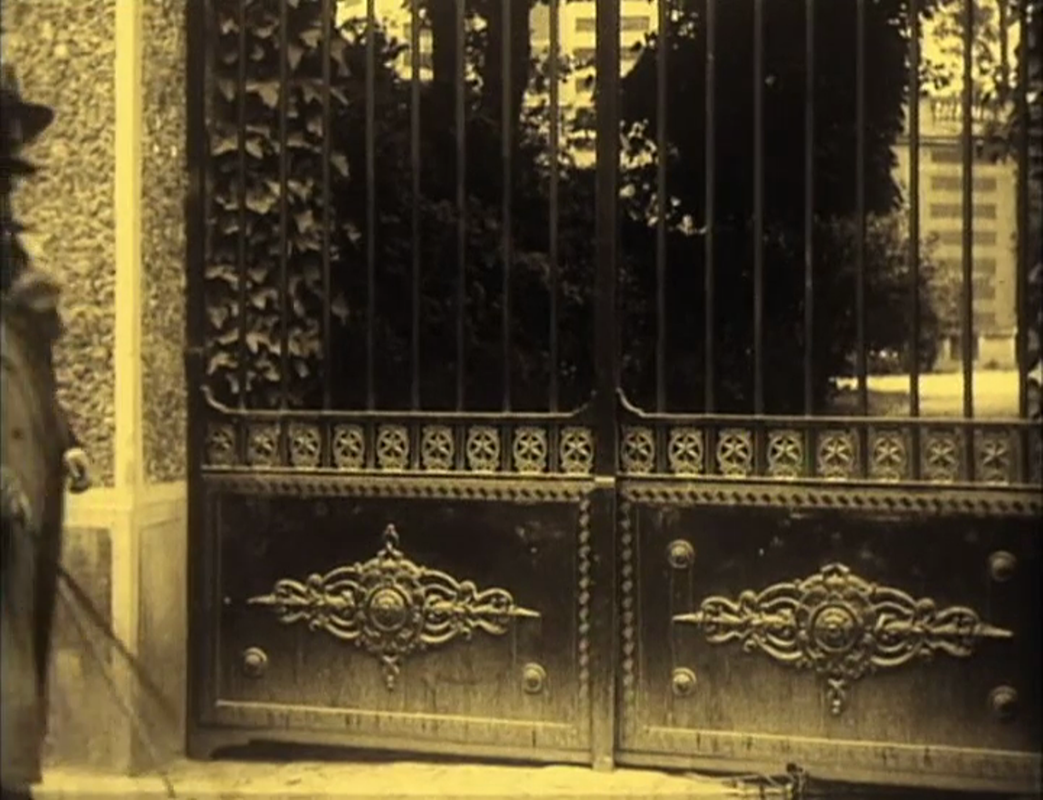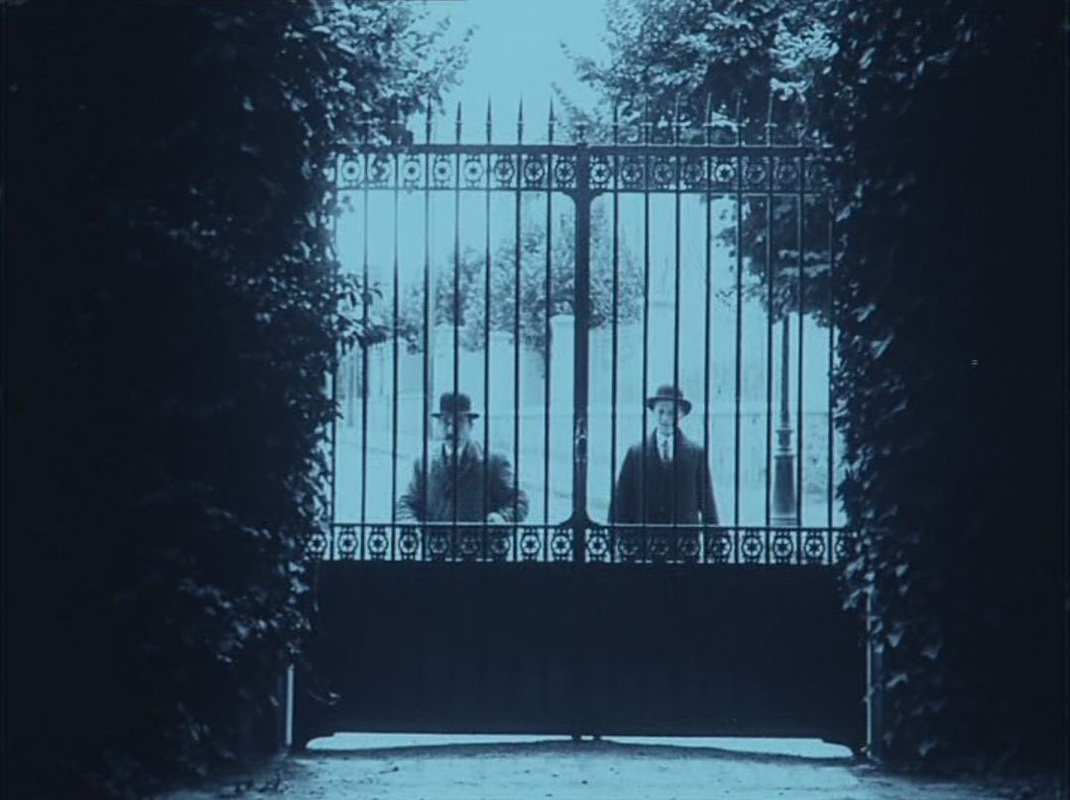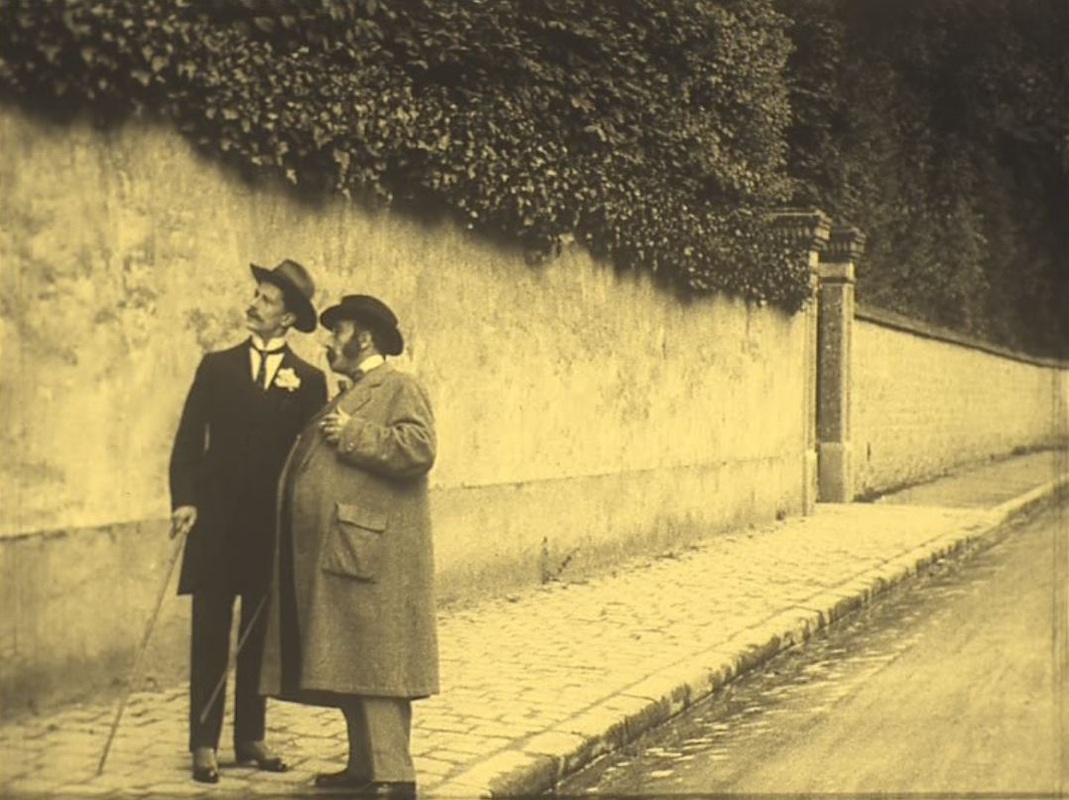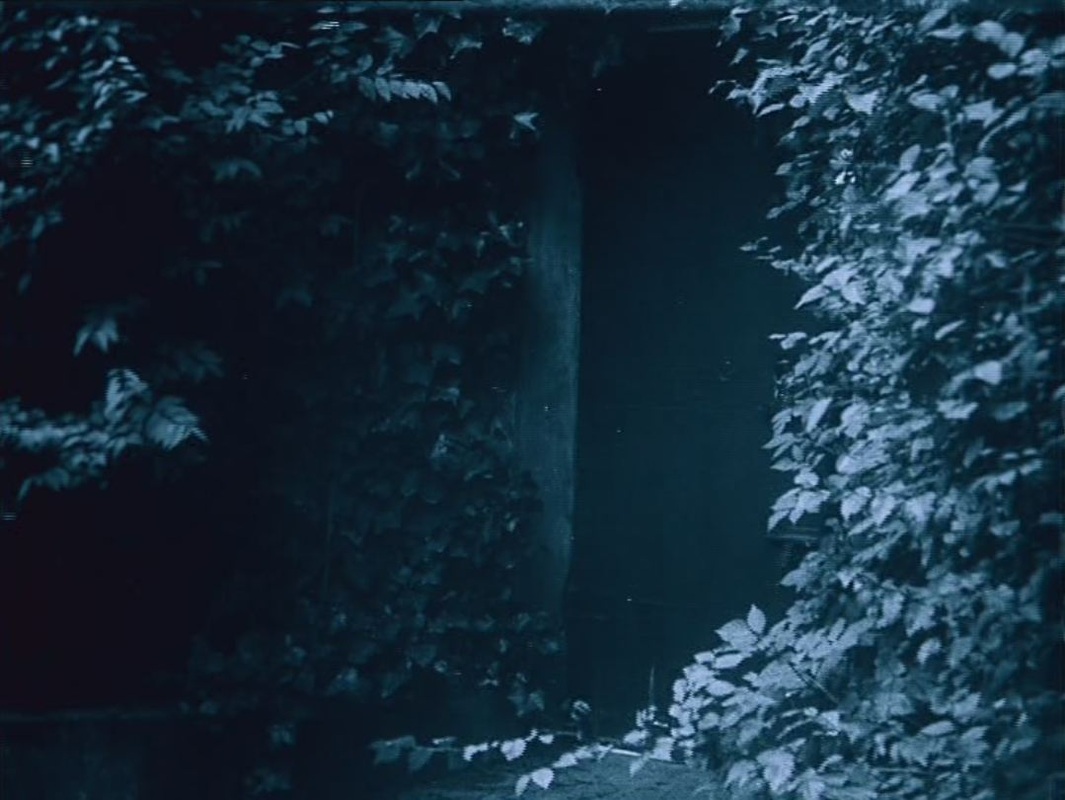Feuillade's Lonely Villas
In his melodramas and crime films Louis Feuillade had a predilection for shooting in those individualised, self-contained houses set in leafy grounds that the French call villas or, less modestly, châteaux:
For a larger sample of such buildings see here.
The development of narrative cinema coincided with an expansion into the suburbs of a wealthy bourgeoisie whose class pretentions were expressed in the building of fanciful residences. Here is Feuillade's own 'modern style' villa in Villemomble, built for the mayor of the town and acquired by Feuillade c. 1912:
The development of narrative cinema coincided with an expansion into the suburbs of a wealthy bourgeoisie whose class pretentions were expressed in the building of fanciful residences. Here is Feuillade's own 'modern style' villa in Villemomble, built for the mayor of the town and acquired by Feuillade c. 1912:
He used his own home as a location in several films, including L'Accident (1912), Fantômas - à l'ombre de la guillotine (1913), Judex - la meute fantastique (1917) and Barrabas - la Villa des Glycines (1919) (see here for more details).
In the 1840s it belonged to Louis-Philippe, the king of the French. A later owner, the sculptor Michel-Victor Cruchet, added a turret to give it more of a Renaissance air (see here for these details). In the year Feuillade filmed there it was acquired by the Boué sisters, high class couturières and women about town. After falling into ruin the building was demolished in 1956.
This late eighteenth-century residence was the home of Chateaubriand between 1807 and 1816. It was he who added the caryatids at the entrance. It seems to have been unoccupied when Feuillade filmed there. In 1914 it was bought by the psychiatrist and Chateaubriand-enthusiast Dr Le Savoureux. It is now a museum devoted to Chateaubriand:
The Chateaubriand connection has no bearing on Le Destin des mères, and it is surprising to find Feuillade at a location so far (about 25 kilometres) from the Gaumont studios, especially when the film uses very little of the location's distinctive features. My tentative guess at an explanation would be that those features are more fully exploited in one or other of the films made in the same month with some of the same cast members (Le Chef-lieu du canton, Tant que vous serez heureux), and that it was more convenient to make Le Destin des mères here than to move back closer to the studios or to Feuillade's home. This is just a guess, since I have seen nothing of those other films and have no idea if they were filmed here.
Earlier that same year Oumiroff's villa had been chosen to play a more serious role than film location, as residence for the Turkish delegation to the Versailles treaty talks. However, on arrival the Turks considered the interior décor of the villa unsuitable and requested that they be found other accommodation (for details see an article in Le Cri de Paris of 22.6.1919, here).
In the 1920s the villa was owned by the Wertheimer family, industrialists who financed and, according to her, cheated Coco Chanel. During the Occupation it served as Kommandatur and army barracks, and it now houses a unit of the CRS (see here).
This last phase of the villa's history has had an unexpected consequence for the location hunter. I identified the place in the film by looking at postcards from the period, but had I been actually on the streets of Vaucresson in my search I would certainly have walked straight by La Vaucressonière as it looks now:
I still can't understand how or why the building came to change its appearance so radically. If it weren't that the gates are the same I would still have my doubts:
This is not a building that has been remodelled beyond recognition:
Purpose-built as a mairie in 1869, it now houses the Reuil-Malmaison museum of local history (here).
In the penultimate episode of Les Vampires another mairie appears, though only obliquely. The hero's wife and mother have gone to a suburban villa where they will be safe, supposedly, from the Vampires:
Despite what the postcard says this is not Brunoy but neighbouring Epinay-sous-Sénart, south-east of Paris, about 30 kilometres from the studios. The last twenty minutes of this episode are filmed in the area, at Brunoy and in the forest of Sénart.
In the film this looks like an ordinary suburban villa; in this postcard it looks a little less modest:
And a view from the other side reveals something much more substantial:
The château was built at the end of the nineteenth century for Eugène Ritt, the director of the Paris Opéra; when Feuillade filmed there it was the home of Ritt's daughter Charlotte and her husband the sculptor Jacques Froment-Meurice. It became the mairie of Epinay-sous-Sénart in 1969.
The actual location is at Herqueville, about 40 kilometres further in the same direction but beyond even the broadest limits of the suburbs and into the next département. The whole production was based in this area for the first five episodes of the serial, using the old mill at Andé and, famously, the ruins of the Château Gaillard at Les Andelys (see here for more on this last location).
The history of Herqueville and surrounding parts is dominated by the car manufacturer Louis Renault, who began accumulating land and properties here in 1906 and created a vast domain, devoted particularly to innovations in farming. (The story is well-documented here.) His own château at Herqueville was rather odd-looking but beautifully situated:
In 1934 Renault bought the château we see in Judex and demolished it.
(I am very grateful to Yvette Petit-Decroix for her help with this research.)
(I am very grateful to Yvette Petit-Decroix for her help with this research.)
There are other villas and chateaux of interest in Feuillade's serial films. La Nouvelle Mission de Judex (1918) is set chiefly in and around luxury abodes near the forest at Fontainebleau, including the château des Brulys at Vulaines-sur-Seine (built 1907):
For his films set and shot in the South of France, such as Tih Minh (1918) and the latter parts of Judex and Barrabas, Feuillade also used isolated villas as locations - to be discussed in a future post.
I'll close this one with a return to a problem posed in an earlier post, regarding the villa of Lady Beltham in Juve contre Fantômas, the second of the Fantômas films. In the first film this villa, supposed to be in Neuilly-sur-Seine, was actually Feuillade's home in Villemomble:
I'll close this one with a return to a problem posed in an earlier post, regarding the villa of Lady Beltham in Juve contre Fantômas, the second of the Fantômas films. In the first film this villa, supposed to be in Neuilly-sur-Seine, was actually Feuillade's home in Villemomble:
But for the second film Feuillade used a different villa to represent the same place. We don't see much of the house, but we do have good views of the grounds, the gate and the street outside:
I've looked very hard for this mystery villa, with no luck. If that changes I shall post again.
Films by Feuillade are also discussed in the following posts:
- Fantômas Over Paris: Fantômas: à l'ombre de la guillotine
- Fantômas Over Paris: Juve contre Fantômas
- Fantômas Over Paris: Le Mort qui tue
- Fantômas Over Paris: Fantômas contre Fantômas
- Fantômas Over Belgium: Le Faux Magistrat
- Three filmmakers in Romainville (Une dame vraiment bien)
- A staircase in Belleville (Les Vampires)
- Irma Vep posts a letter (Les Vampires)
- Inside-Outside: space and light in Judex
